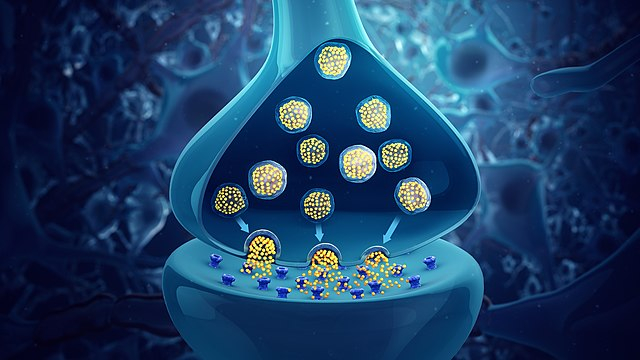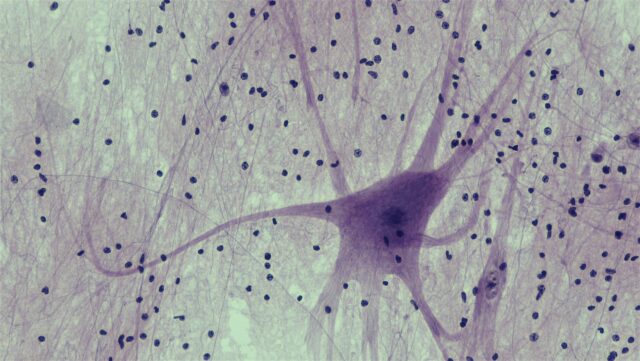Neurotransmitter Discovery Leads to Potential Parkinson’s Breakthrough

Neurotransmitters binding with a neuron. (Credit: Scientific Animations/CC BY-SA 4.0)Parkinson’s disease, a progressive disorder of the central nervous system, is estimated to affect more than 10 million people worldwide. Hallmarks of Parkinson’s include mobility loss and unintended movements such as tremors, making the disease inconvenient at best and debilitating at worst. For decades, it’s been understood that Parkinson’s is caused by age-related brain deterioration that precludes the creation of dopamine. But dopamine—a crucial part of the brain’s movement and reward systems—doesn’t work alone, and finding its neurological foil has proven vital to improving scientists’ understanding of the disease as a whole.
Researchers in Oregon appear to have done just that. In a paper for the journal Nature, neuroscientists at Oregon Health & Science University (OHSU) describe the process by which they discovered adenosine, another neurotransmitter, works as dopamine’s opposite. Their findings have given way to an improved understanding of how Parkinson’s begins to manifest in the brain.

A spinal cord motor neuron. (Image: Berkshire Community College Bioscience Image Library/Wikimedia Commons)
Dopamine plays a key role in facilitating movement. It serves as a chemical messenger, allowing neurons to pass locomotive orders between the brain and other parts of the body. But if dopamine is the gas pedal, adenosine is the brake. While dopamine operates on a neuronal circuit that promotes motion, adenosine works on a separate circuit that inhibits motion. Together, the two neurotransmitters orchestrate what we consider normal, healthy movement using a “push-pull” system.
The team at OHSU confirmed adenosine’s role in locomotion in a study with mice. Using a genetic engineering technique they employed in a previous study, the researchers custom-developed protein probes, or single strands of DNA that search for their complementary sequences in a defined location. Then they used two-photon fluorescence lifetime imaging to track adenosine’s activity within the mice brains.
Though there’s still work to be done when it comes to thoroughly understanding adenosine’s role in Parkinson’s disease, the neuroscientists’ discovery offers a path down which researchers can confidently investigate the neurotransmitter’s behavior. Drugs and other treatments targeting adenosine might provide a new way for medical experts to stave off Parkinson’s onset or reduce symptoms for those already diagnosed with the disease.
Now Read:

Comments are closed.